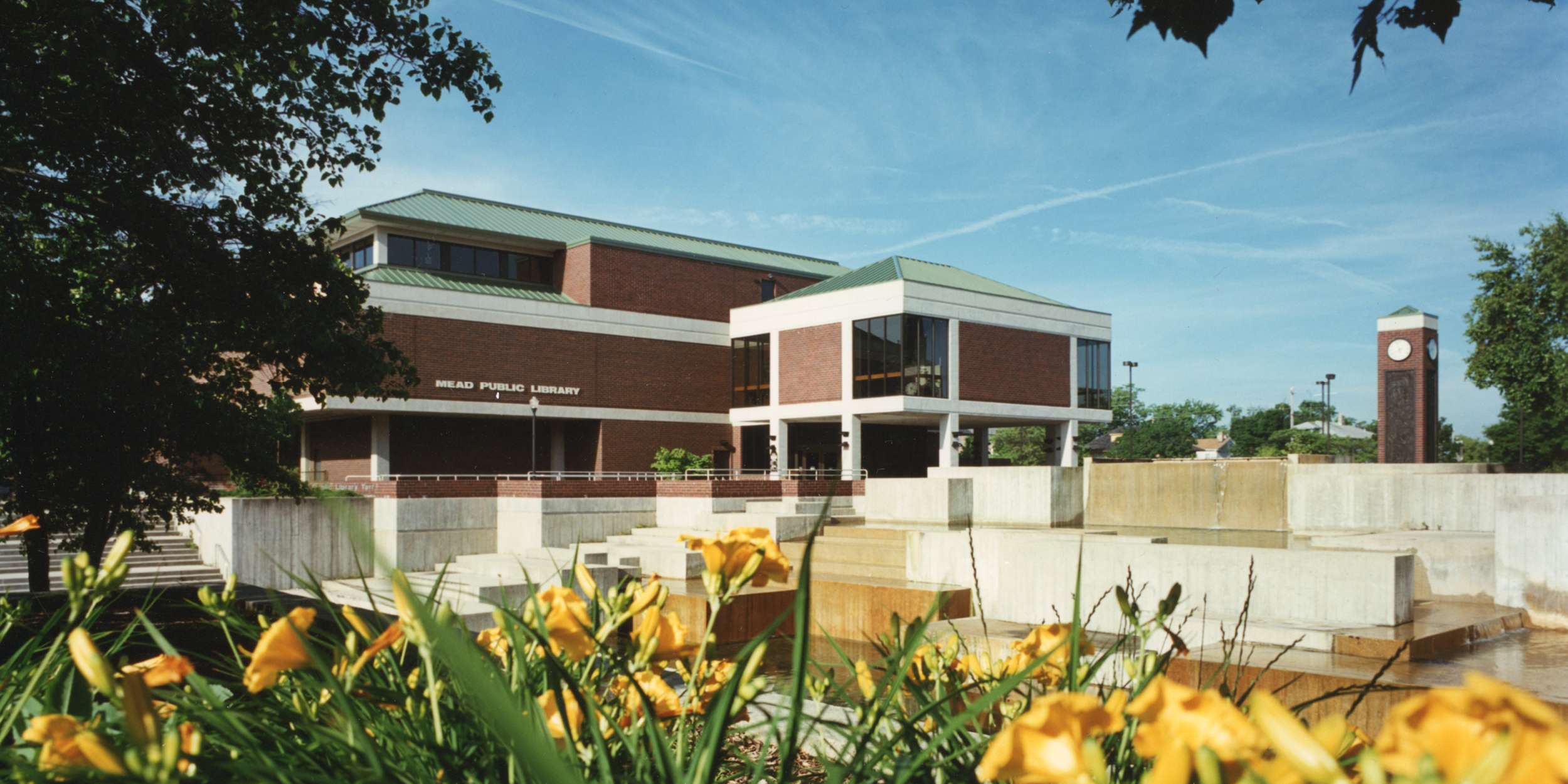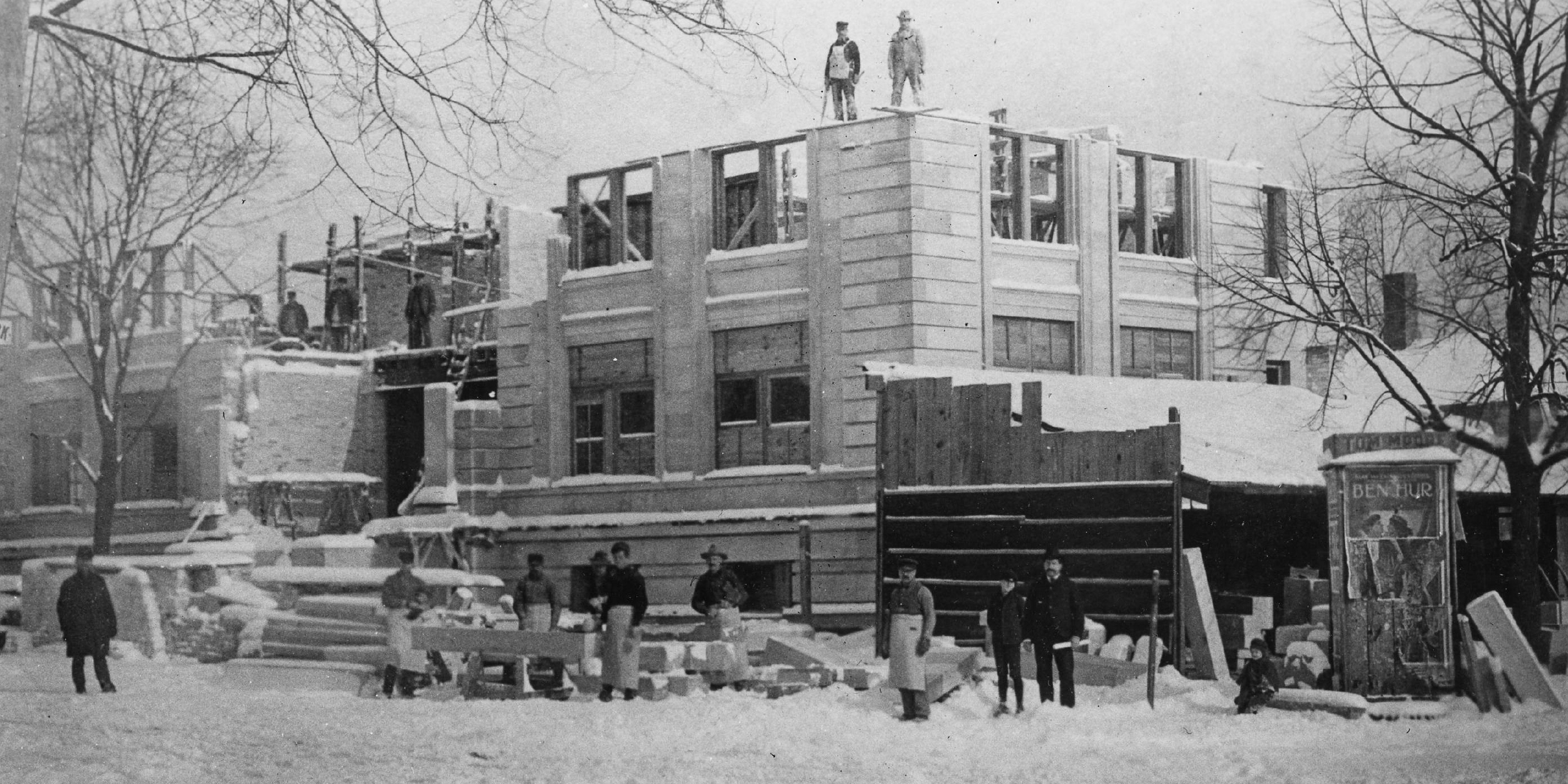
Photo: Workers at the construction site of the Sheboygan Public Library in 1903.
The history of Mead Public Library written by the late E. R. Kunert, who was library director from 1962-1991, to mark the library's 100th anniversary in 1997. (Abridged edition)
The year was 1897 and residents of Sheboygan, a town of 21,130, enjoyed the opportunity of regularly scheduled steamship trips on the Goodrich Line to Milwaukee, Chicago, Escanaba, Green Bay, and Manitowoc.
The Pabst Brewing Co. created a beer garden in an empty building at 8th Street and New York Avenue; the H. C. Prange Co. was advertising 45-inch feather boas for 50¢, neckties for 15¢ and golf caps for 30¢, while the E. Lohman Store offered ladies union suits for 95¢; and on February 15 the Sheboygan Common Council passed an ordinance which established a public library for the City of Sheboygan.
The passage of the ordinance was prompted, in general, by a local feeling that a progressive city such as Sheboygan should not lag behind its sister cities in Wisconsin in providing its citizens with the benefits of a public library, and because James Mead had left to the City a $20,000 trust fund for the establishment of a library.
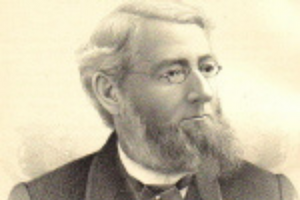
to provide places “for the amusement and
literacyculture of young men,” – or more specifically,
to create a public library.
James H. Mead
James Hooker Langdon Mead, born in Montpelier, Vermont on December 6, 1831, came to Sheboygan in 1856. With his father-in-law he founded and obtained a charter for the German Bank (later 1st Wisconsin-Sheboygan and now Firstar). At the time of his death on September 22, 1891, he was president of the German Bank, president of the Crocker Chair Co., vice president of the Brickner Woolen Mills of Sheboygan Falls, secretary of the Phoenix Chair Co., and a director of the Lake Shore Railway.
According to Portrait and Biographical Record of Sheboygan County, Wis., "He was a man who would take great risks in lending assistance, and was very lenient to debtors, but seldom lost thereby," and "seeing the many temptations to which young men are exposed who seek entertainment on the streets, or worse still, in the saloons," he left $10,000 to the Congregational Church and $20,000 to the City of Sheboygan to be used to provide places "for the amusement and literary culture of young men," in the case of the gift to the City, for a public library.
His will named his son-in-law, Francis (Frank) Williams, and George C. Cole as his executors. In a time less troubled by a need for speedy communication, Mr. Williams waited until February 12, 1897 to write the official notification of the bequest to the Common Council. Although not filed with the city clerk until February 17, and not formally presented to the Council until March 1, it can be assumed, from articles published in The Sheboygan Telegram of the time, that the Council's action on February 15 was a direct result of the notification which seems to have been common knowledge.
The minutes of the Common Council's meeting of August 9th, 1897, contain the following report:
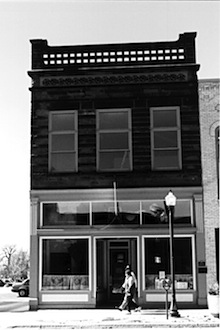
Sheboygan in the building now
occupied by Trattoria Stefano.
The board of library directors of the city of Sheboygan hereby reports that it has entered into an agreement, subject to your approval, with Henry Foeste, for the lease of the two-story brick building, numbered 412 N. 8th St., for the term of five years, the rental for the first year to be $120.00, for the second year $180.00, for the third year $240.00, for the fourth year $300.00, and for the fifth year $300.00, all to be paid monthly at the end of each month.
The board therefore asks that the said agreement for lease be approved and that it be authorized to enter into a lease in accordance with said agreement.
Dated Aug. 16, 1897
The building selected for the library became 522 S. 8th Street when street addresses were renumbered. It is currently occupied by Trattoria Stefano.
The Library Board hired Katherine Buchanan, a local person, as the first librarian. The Common Council appropriated $1,416 for the operation of the library during its first year, and $1,474 was raised by a public fund drive for the purchase of books. Some $800 of that amount was raised through the efforts of the Woman's Club.
On November 1, 1897, the following article appeared in The Sheboygan Telegram:
New Library Opens
The new public library was thrown open today and the issue of cards was begun.
The dedication of the library was as devoid of ceremony as has been the routine of preparing for issuing books. So informal was it that few people knew that the issue of cards would begin today, so that up to 3 o'clock that number of applications was limited Although the last 500 volumes ordered have not arrived and will not be here until the latter part of next week, the library is opened under the most favorable circumstances. The books are carefully selected, representing the best in literature, and cover a wide range. The library and reading room will be open from 2 till 9 p.m. daily and on Sunday the reading room will be open from 2 till 6 p.m.
The first book taken from the new library was Jack and Jill by Louisa May Alcott, borrowed by the Rev. James Churm of the Methodist Episcopal Church. (The Rev. John Sietsema of Hope Reformed Church [Holland] was the first to apply for a library card, but he declined to borrow a book at that time.)
On November 2, 1897, The Sheboygan Telegram reported that 31 applications had been received and, on November 4th, it was reported that a total of 150 books had been loaned since the opening of the library. By November 10th, problems were developing as The Telegram reported that the large numbers of children using the library were displacing the space available for young men. The reading room was to be rearranged to provide more suitable space for adults. By that time, 391 cards had been issued and 567 books loaned.
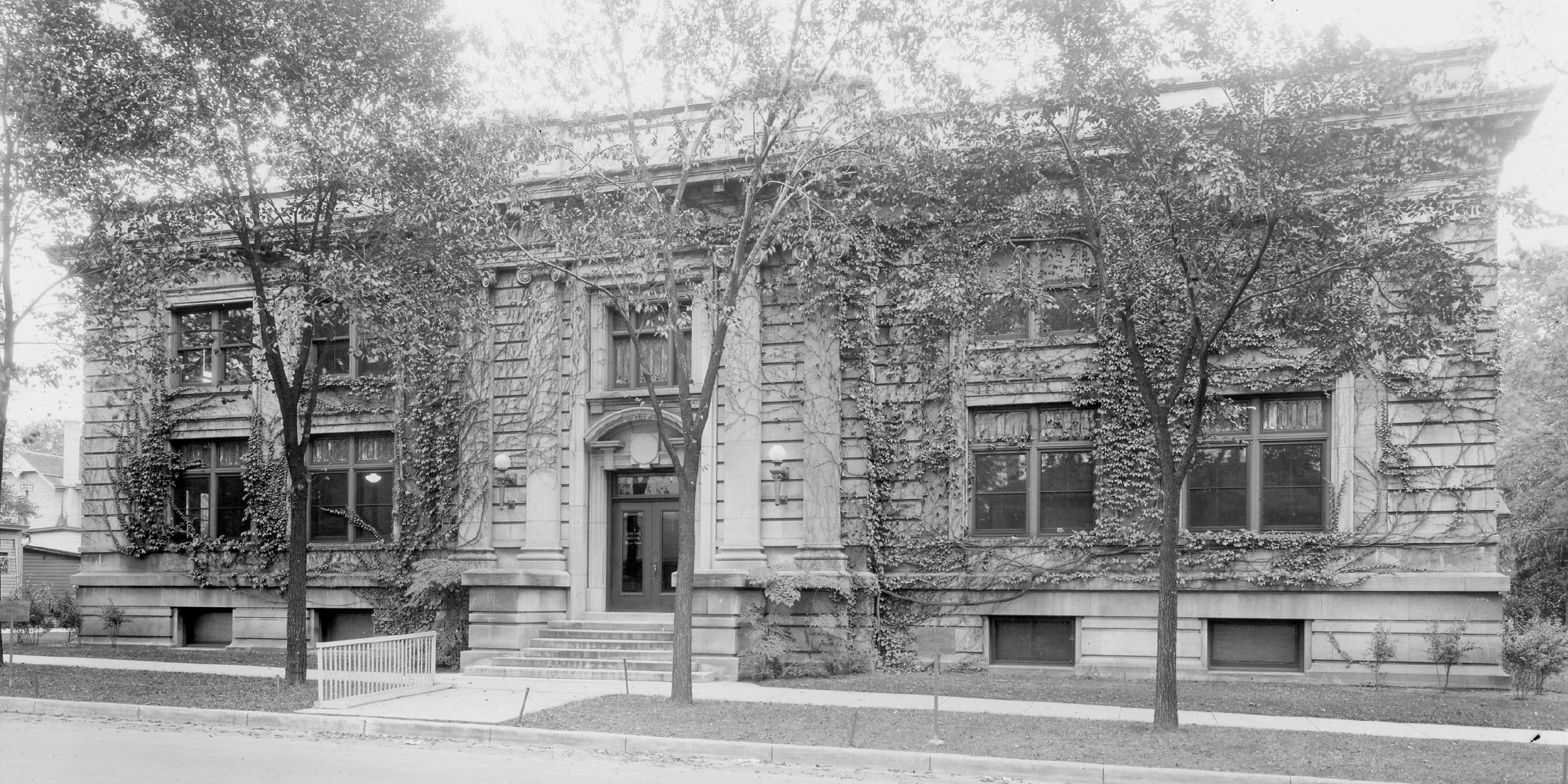
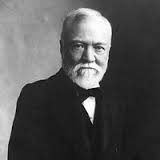
Andrew Carnegie Helps Out
The year was 1904 and absent from any mention in the newspaper of that day was news of the completion of Andrew Carnegie's gift to the people of Sheboygan: a new library building.
As a member of the library board (and as an executor of Mead's will) James Mead's son-in-law, Francis Williams, felt that Mead's bequest would be greatly enhanced by a gift of a library building from Andrew Carnegie.
The aid of Mayor F. A. Dennett, a library enthusiast, was enlisted and he wrote to Carnegie:
At an informal conference of some of our citizens I was requested to confer with you on the subject of a Carnegie Library for our city. We now rent a room and have a fair start on books; the city pays about $2000 per year for maintenance and small additions.
There are few wealthy people here. Our population is about 23,000, mostly Germans, some Hollanders and Scandinavians. The industries are principally in wood-working, chairs being the principal product.
Our working people are peaceful, provident, industrious, intelligent and generally own their own homes ranging in value from $1000 to $2500.
We have five modern ward school houses and a fine large new high school building, all crowded to their utmost capacity. The municipality is heavily in debt and taxes are high. We have heard and talked of your benefactions and feel encouraged to present our case to you.
If you could find it agreeable to provide for a Library building, we would furnish a good site and provide maintenance and additional books.
We respectfully suggest a building costing about $25,000 as in keeping with our needs and prospects. Whether you assist us or not, we beg to assure you of our appreciation of your magnificent generosity and helpfulness to your fellow human beings without regard to location, religious sect or social standing. I remain, Mr. Carnegie, with great respect,
Very truly yours,
F. A. Dennett
In a surprisingly short time, Mayor Dennett had received the following answer:
Yours of 20th received. If the city of Sheboygan will furnish a site and agree through its council to spend $2,500 a year on its library, Mr. Carnegie will be glad to give $25,000 for a free library building.
Mary Planinsheck, a former employee of the Mead Public Library, in her History of the Mead Public Library, Sheboygan, Wisconsin, 1897-1950, wrote:
A site was purchased by the city at a cost of $3,500.....Originally Carnegie agreed to give $25,000 for a library building. This amount proved to be inadequate, and Carnegie was asked to increase it to $35,000, which he did. The city allotted $3,500 annually for maintenance and books. The plans included a basement and two stories made of Bedford limestone. The first floor provided for a small study room, general reading room, book room, children's room, and the librarian's office. The second floor contained a lecture room, museum room, trustees' room, and one unassigned room. The architects were Patten and Miller of Chicago. Their plans were accepted in July, 1902. Dennett, who had much to do with the city's obtaining the Carnegie fund, turned over his yearly salary of $500 as mayor to be used for purchasing books. The library also received $1,474 through subscriptions. Building contracts were entered into on September 11, 1902, and the library was completed May 11, 1904.

Catching Up on Other Matters
Katherine Buchanan resigned as librarian in May 1900 after serving for about two and a half years. She was replaced by Bertha Rombauer, who left after less than one year on the job and was replaced in April 1901 by Bertha Marx, who did stay-for 38 years.
The library was closed for about a month and a half for moving into the new Carnegie building. Library cards were issued free. County people, outside the city of Sheboygan, were charged twenty cents a month for the privilege of using the library.
Miss Marx started a program of advertising the library and educating the public about its benefits. Despite those efforts, in 1923 The Sheboygan Press reported that only one-third of the community used the library.
In September of 1938, the library board, criticized for years for not meeting the community's expectations and needs, agreed to ask the trustees of the Mead Trust for funds to have a survey made of the library.
In general, the survey was critical of all areas of library activities--current services were weak in both quantity and quality of staff and materials, and there was not enough development of new services. The survey stressed the need for increased funding and for more space and noted that many of the deficiencies found were due to poor funding.
On June 27, 1939, Miss Marx submitted her resignation. It was noted in The Sheboygan Press that Marx "did not want the responsibility of establishing the new program which was called for in the survey."
She was followed by Marie Wigmore Barkman. Soon after her arrival, Barkman attended a meeting with the library board, the Common Council and the trustees of the Mead Trust. Barkman pointed out needs for a reference department in the library, more books and more space. Things appear to have fallen quickly into place. The library board expanded the library's hours and asked the Mead Trustees for money for an expansion of the library. The Common Council provided additional funds to meet the library's new policies. It was agreed by the Mead Trustees to provide $50,000 for an addition to, and $10,000 for the remodeling of, the original library and the Mead Trustees obtained an architect to design the addition and the remodeling. The architect was Edgar A. Stubenrauch and after his sketches and specifications, which incorporated Barkman's suggestions and recommendations, had been accepted by the library board, the Common Council agreed to provide $4,000 for furniture. Construction began in April 1940 and concluded in January 1941.
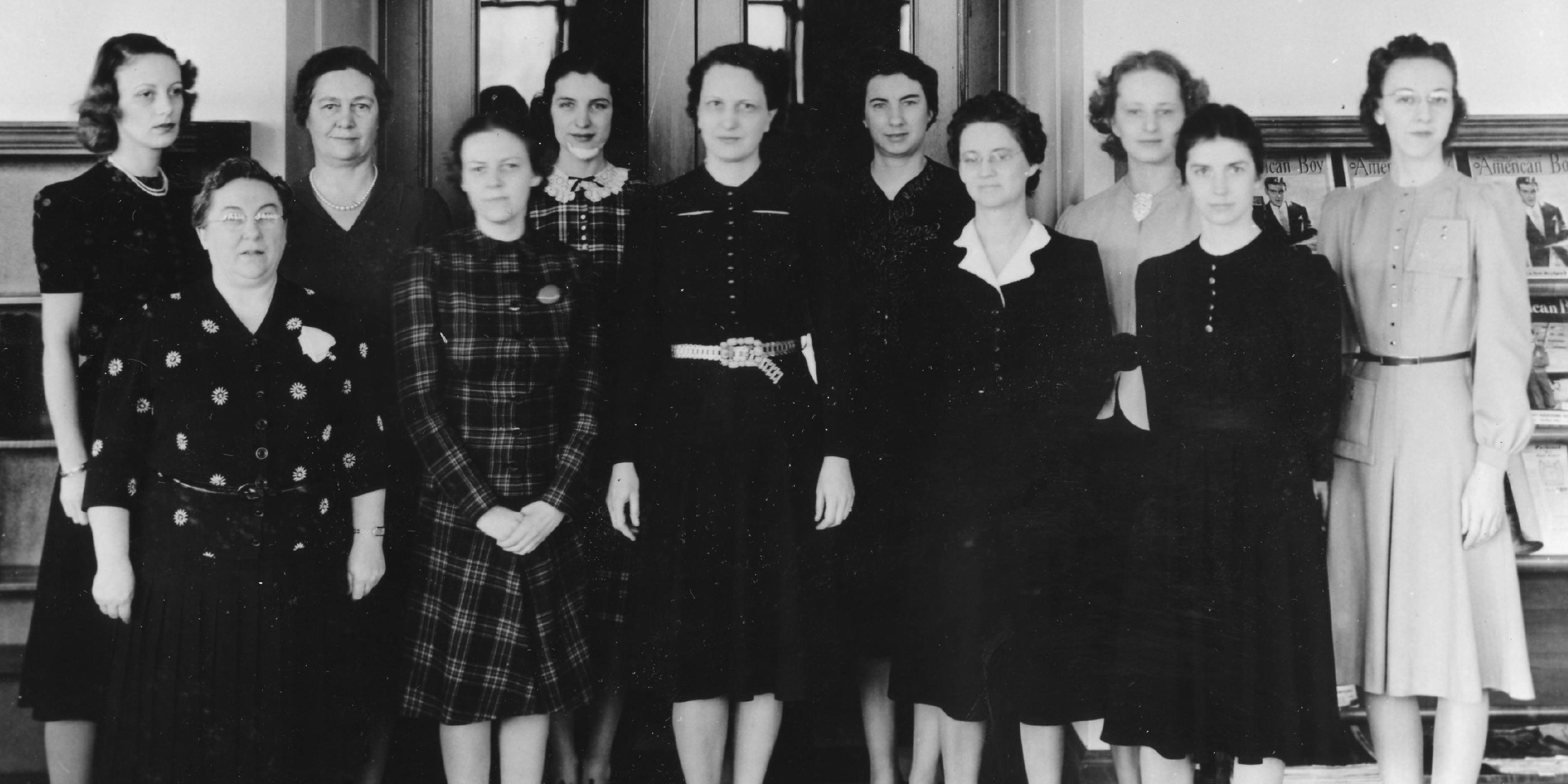
The Mead Trust and How It Grew
It would be well to look at developments in the history of the Mead Trust, which played such a vital part in the history of the Mead Public Library. Mead's bequest was unusual because, although he died in 1891, it wasn't until the Wisconsin Supreme Court gave its final decision on April 12, 1938, that it was definitely decided that the money in the trust should be expended for library purposes for the benefit of the people of Sheboygan.
In his will, Mead left $20,000 in cash or stock in the Phoenix Chair Co., to be held in trust, to found a library in Sheboygan. In April 1914, Williams again reminded the mayor and Common Council of the notice given in 1897. He also noted that the stock was now worth $40,000 and that there were also other securities worth $12,500.
With the death of Williams in 1935, the big question was asked: Should the trust be paid over to the new trustees, or to Janet Osborn, granddaughter of Mead, under the will's residuary clause?
On February 5, 1937, Judge L.E. Lurvey entered a formal order directing that the balance of the trust, which by this time had grown to more than $100,000, be turned over for library purposes in the city of Sheboygan. The Supreme Court of Wisconsin, on January 13, 1938, agreed. On April 12, the Court reaffirmed its decision.
The Return of Jim Mead
The year was 1941, and in marked contrast to the publicity given to the opening of the Carnegie library in 1904, The Sheboygan Press of January 8, 1941 devoted prime front page space and the major part of the first five pages of the second section of that issue to that day's ceremony celebrating the opening of the newly remodeled and enlarged library, now known as the Mead Public Library, in compliance with the terms of Mead's bequest.
James Mead had struck again! In 1897 his gift to the city had prompted the mayor and Common Council to create a public library. Now, in 1941, his gift had finally been used. A major part of the bequest ($60,000) was spent for the addition and remodeling. It was truly a gift that kept on giving.
The addition, as Stubenrauch designed it, added 29 feet to the east side of the building and was 91 feet and six inches wide. The first floor contained a remodeled study area, a reference department, the head librarian's office and outer office, a young people's room, the card catalog, a circulation desk -designed by Barkman - and the first floor of the book stack area which extended upwards to a book stack area mezzanine. At the north end of the mezzanine area was a staff room and at the south end a workroom for cataloging and processing books. On the second floor of the addition was a large children's room. On the second floor of the original building was a workroom and a meeting room (known as the Forum Room) and a smaller meeting room.
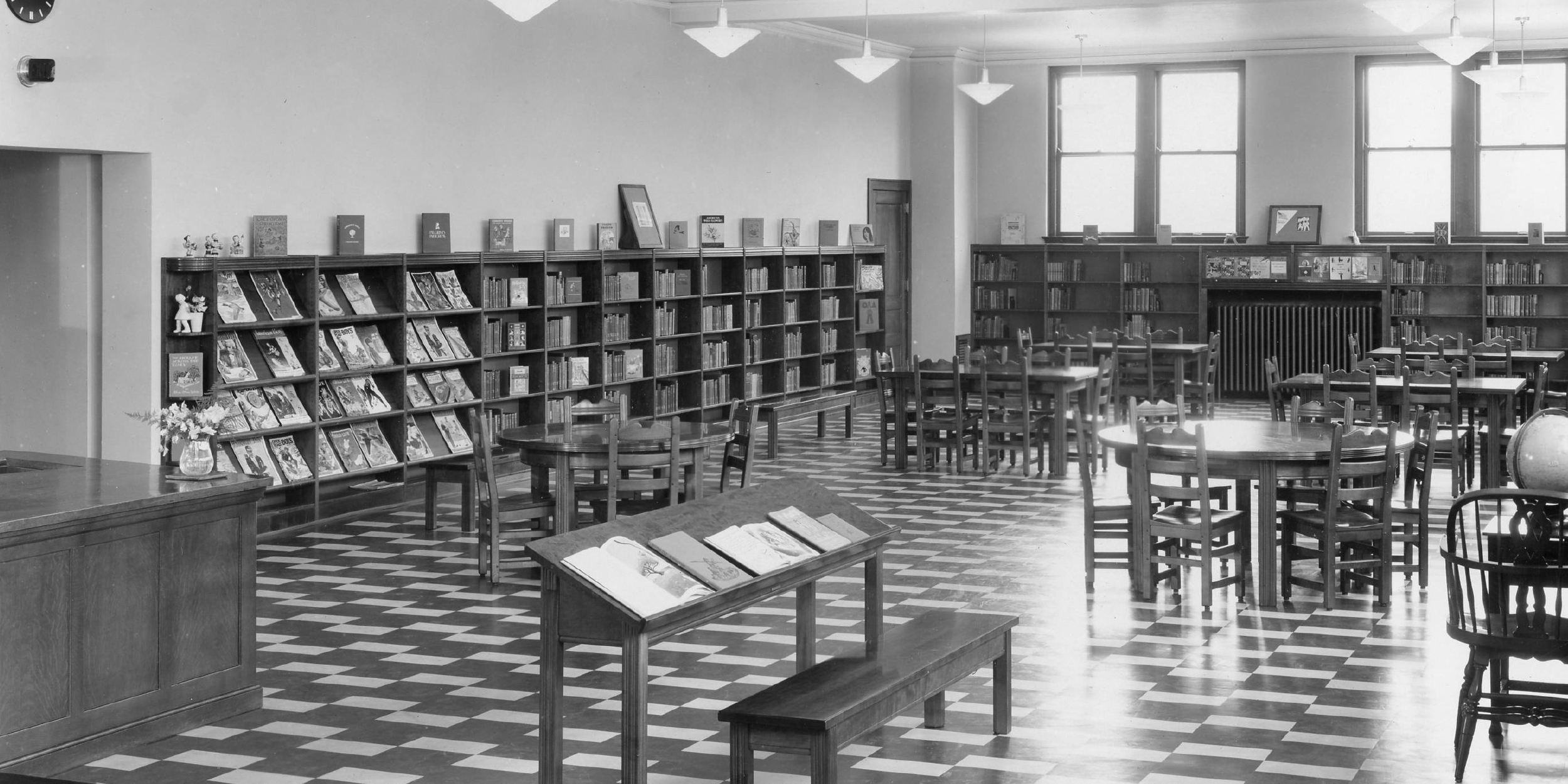
By 1950, the library had met or surpassed most of the recommendations in the 1939 survey of the library. But without annual contributions from the Mead Trust, the book collection would not have met the goals set by the survey.
It was also during the early 1950s that the library built two branch libraries. Although Sheboygan had had many different branches over the years, these were the first constructed to serve as library branches.
Each had a separate entrance off the street, which made them somewhat, but not entirely, more inviting to adults. The first was the Frank Stone branch attached to Cooper School. Frank Stone was the first librarian of the Sheboygan Library Association and, perhaps, responsible for its founding. The Association, a common development in American cities of this time and earlier, was composed of a number of people who, together, purchased books and placed them in a common place for their use only. The first one was started by Benjamin Franklin in Philadelphia. The Sheboygan Library Association was the predecessor but not the ancestor of the Mead Public Library. There was no direct connection between the two although its creation did show that citizens wanted access to a library.
The second branch was named after Charles E. Broughton and was attached to Wilson School.
E.R. Kunert was hired to replace Miss Barkman who retired in 1962.
Early in 1964, the library board agreed that a new or expanded library building was needed and money for planning was requested of, and granted by, the Common Council in the next annual budget. A bond issue, containing $2.3 million for the construction of a new library, was approved by the Common Council in 1970. The city at this time was acquiring land for an open mall development. City Planner Frank Pacquette reported that some of this land, at 8th and New York, could be used as a library site.
In 1972, the League of Women Voters offered to cooperate with the library in forming a Friends of the Library group. The board welcomed such cooperation and the Friends of the Mead Public Library organization was started.
Despite increased hours of service, staff and increased book budgets, the major part of the circulation from each branch library was through its use as a library station by the students of the schools to which they were attached. The branches were closed and turned over, with most of the furnishings and books therein, to the schools on June 30, 1974.
In the late 1960s, the Mead Public Library had been left a bequest by Ethel Everhard, a former teacher in Sheboygan. By 1974, the library had received $133,000. The interest was designated to be used for a wide variety of library programs and the fund was named in honor of Miss Everhard.

A New Library
The year was 1974 and the new 64,000 square foot library was about to open. Thousands of people would go through the library that day but now about a thousand of them circled the new building poised with their blunt-tipped scissors to cut the wide ribbon that had been stretched around the red brick building. After the mayor and the president of the library board had spoken, the signal was given and the crowd snipped away, most of them saving as souvenirs their scissors and bits of ribbon.
Through the east and west entrances they found a wide corridor with a meeting room to the north and the circulation area and desk to the south. A large children's room was to the south of the circulation area. Upstairs was the entire adult collection and reference desks. In the basement were the administrative offices, staff room and locker area, periodical storage area, technical services, print shop, public relations, the maintenance department, and the mechanical equipment rooms
Before the opening, hundreds of high school students lugged 150,000 books from the old library to the new, one block to the west. Units of the National Guard and the Army Reserve moved heavy equipment with their trucks. Also helping were the Redwings Board, Lakeshore Kiwanis, and the American Association of University Women. It was a great day, and it ended well when a group of men identified themselves as blue collar workers and said: "You know, you don't mind when your tax money goes for something like this."
The new library was open on Sundays and these hours turned out to be the busiest of the week. The library also turned out to be a favorite place for parents to bring their children.
In April 1977, the board requested funds from the Division for Library Services for a demonstration of county-wide library service. It evolved into the Sheboygan County Federated Library Service which further evolved into the Eastern Shores Library System when Ozaukee County joined it.
In 1978 the library got another substantial bequest from the estate of Minnie Forrer, a local teacher. The money was treated the same way as the Everhard money.
An automated circulation system also was developed, working with the City's data processing department. Eventually the library's needs became more complex and an outside vendor was necessary.
In April of 1986, the University of Illinois Graduate School of Library and Information Science selected Mead Public Library as one of 50 outstanding libraries in the United States.
The 1974 library building had been designed for a useful life of 23 to 28 years, so in 1987 the library board began the process of planning for expansion. Later, a Mead Public Library Foundation was formed to solicit private funds to help construct an addition to the library and to help provide an endowment fund for the library's future.
Not wishing to go through another construction period, and thinking a new director should be in place to have input into the planning process, Kunert retired in January 1991.
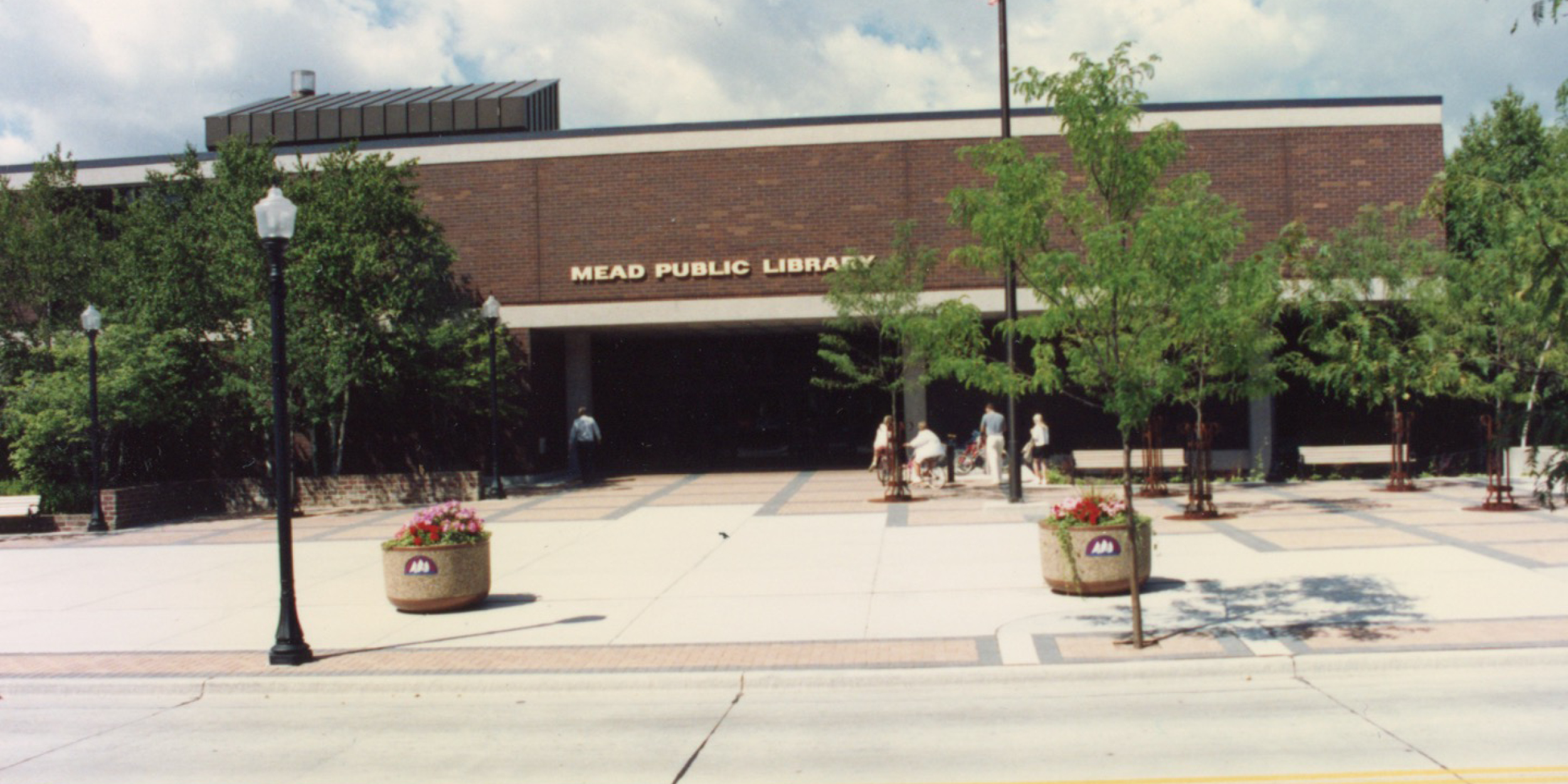
The Centennial Library
Sharon Winkle took charge of Mead on January 21, 1991, in the middle of a building program when sources of funding had not been nailed down and the program itself had not been finally approved by the Common Council, and a fund raising foundation had not yet raised any funds. She did a great deal to keep the building program moving toward Common Council approval.
The bookmobile operation in the city was phased out. Automation continued with the introduction of an on-line catalog and other electronic services.
The Mead Public Library has become new again at a cost of about $4.9 million, the initial cost divided about equally between Sheboygan's taxpayers and private benefactors through the Mead Public Library Foundation.
The building's entrance has been changed to one main entrance on the north side of the building, taking advantage of the setting provided by the water feature. On the first floor is the Circulation Department, Popular Materials Center, and the Rocca Meeting Room. The second floor constitutes the rest of the adult department, the reference department and an area for quiet study. On the third floor is the Children's Room and some unassigned space which makes a great deal of sense during these days of very rapid library growth.
It's a very attractive building.
It's another Great Adventure.
Another Great Day.
